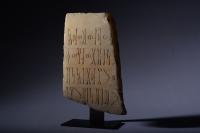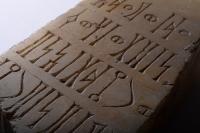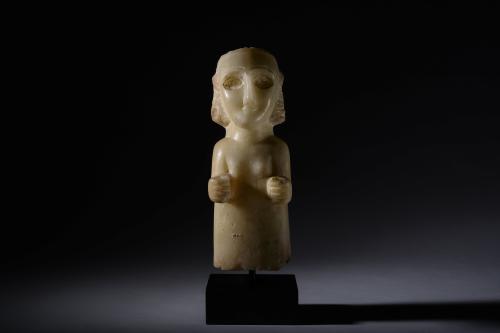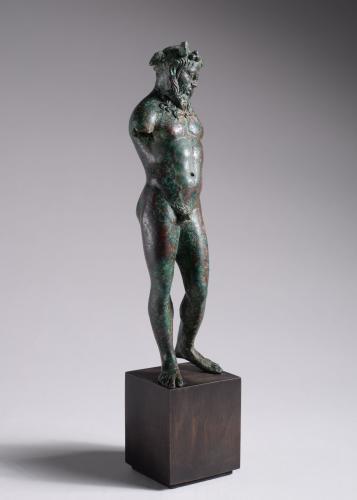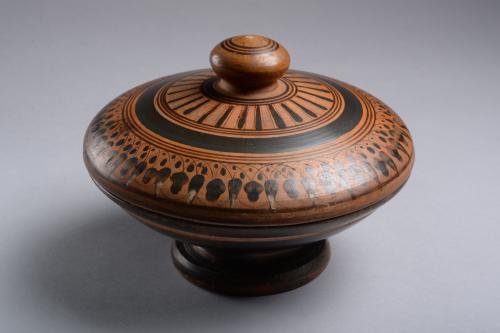
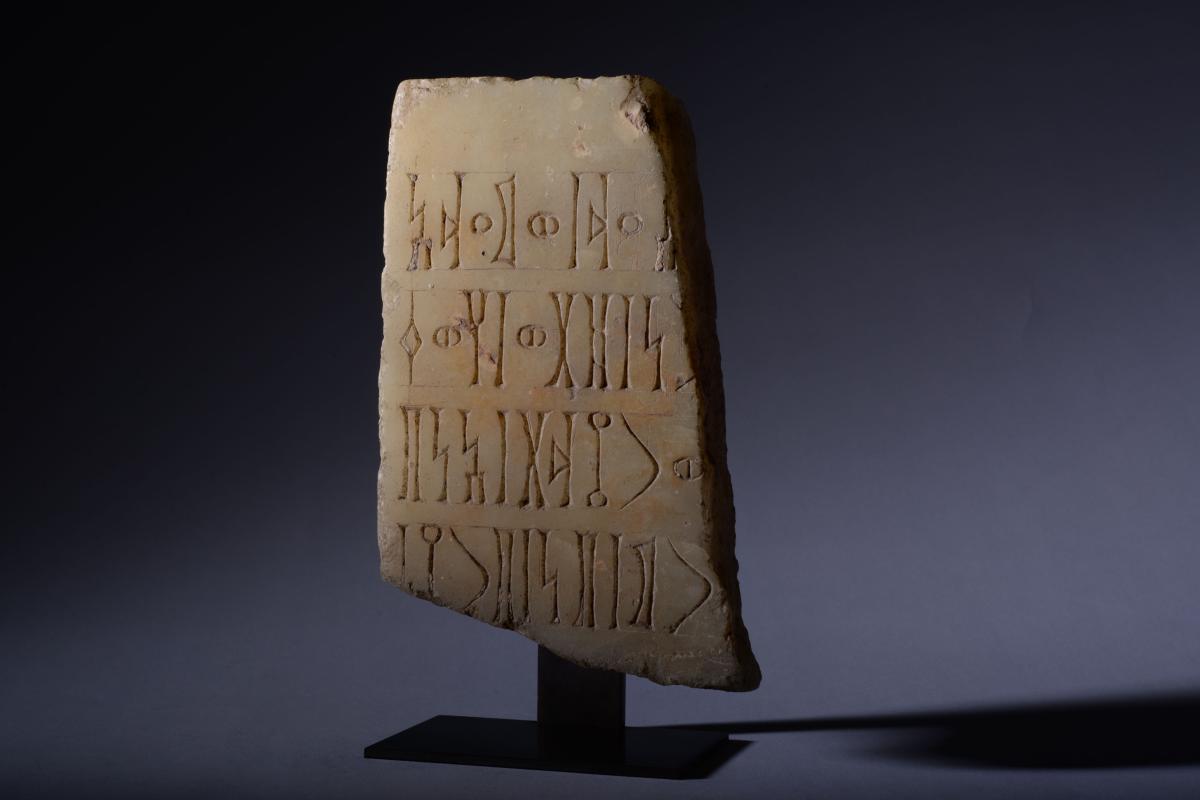
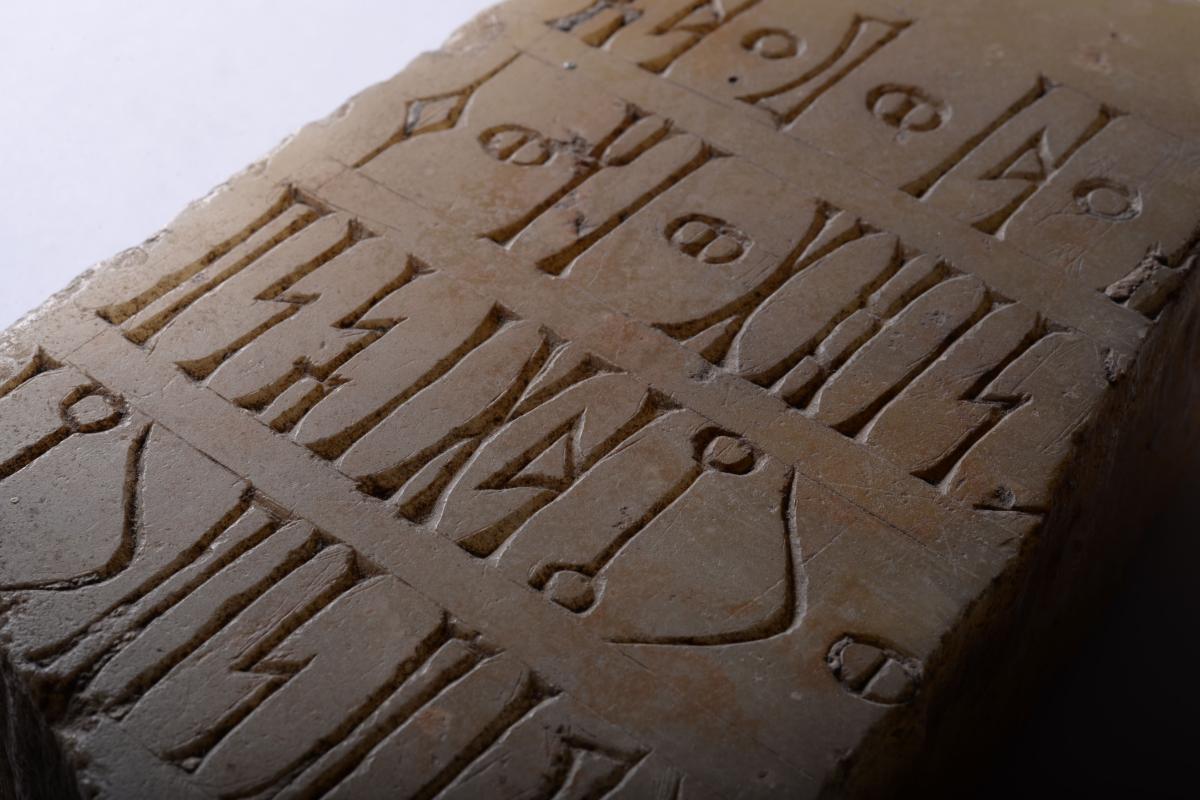
Price
£14000.00This object is eligible for a Certificate of BADA Provenance
The BADA Standard
- Since 1918, BADA has been the leading association for the antiques and fine art trade
- Members are elected for their knowledge, integrity and quality of stock
- Our clients are protected by BADA’s code of conduct
- Our dealers’ membership is reviewed and renewed annually
- Bada.org is a non-profit site: clients deal directly with members and they pay no hidden fees
South Arabian Alabaster Inscription Calcite Alabaster circa 1st century A.D.
This inscription, finely worked on an alabaster tablet, is a remarkably well preserved example of Ancient South Arabian script, with its distinct bold, angular forms, written in the Qatabanic dialect - that is, the dialect spoken by the people of the kingdom of Qataban, which ruled much of modern day Yemen from the 7th Century B.C. to the 2nd Century A.D. The text, which reads: ‘[... ...]sa?d and Ma?add?i- / (of the lineage) of Hawfa- / She entrusted Anb- / against any malfeasance (which would remove it) from its place’ - indicates that it likely served to commemorate a temple offering. The quality of the script, incised so neatly into the surface of the alabaster, tells us that this piece was commissioned by somebody of considerable wealth and prestige, employing a scribe of equally considerable expertise.
South Arabia was known throughout the ancient world for its incredible wealth - so much so that the Romans termed the region ‘Arabia Felix’ - literally, ‘Happy, or Fortunate, Arabia.’ That wealth was built largely on the trade of spices and incense, in which the Kingdom of Qataban played a major part. According to Pliny the Elder, this was the sole country through which frankincense could be exported, first being collected in the city of Shabwa, on the South Arabian coast, and from there travelling by camel up to Gaza, to be shipped all across the Mediterranean - not only that, but all growers of myrrh across Arabia were required to give a quarter of their yield to the king of the Qatabanians. As such, the kingdom became exceedingly rich and powerful, and Pliny goes on to tell us that ‘The nations of the Larendani and the Catabani, and the Gebanitæ [...] occupy a great number of towns, the largest of which are Nagia, and Thomna (the capital of Qataban) with sixty-five temples, a number which fully bespeaks its size.’ Because of the nature of its exports, frankincense in particular - the ‘sweat of of the gods’ according to the Egyptian Book of the Dead, and perhaps most famous as one of the three gifts brought to the newborn Christ - being closely associated with the divine, South Arabia’s reputation in antiquity was as a mysterious, almost sacred, and - crucially - extraordinarily wealthy region, at the very edge of the known world; in the words of Herodotus: ‘’Enough of marvels, and yet the land of Arabia gives off a scent as sweet as if divine.’’
This inscription invokes the protection of god Anbay, the judge-oracle of the chief god ‘Amm, who he served as an attendant. Much of what we know of the religious life of the ancient South Arabians comes to us from early Islamic texts, describing what is known in Islamic scholarship as ‘Jahiliyyah’ - the age before the advent of Islam in Arabia. What comes across in much of these texts is that these religious practices placed a great deal of emphasis on sacred stones, perhaps linked to the brilliance of the alabaster which is local to the region, and which a great many of the cult-objects produced in this time are made from. Hisham ibn-Al-Kalbi’s Book of Idols records: ‘’The Arabs were passionately fond of worshipping idols [...] Whenever a traveller stopped at a place or station in order to rest or spend the night, he would select for himself four stones, pick out the finest among them and adopt it as his god, and use the remaining three as supports for his cooking-pot.’’
This inscription was once in the collection of the intrepid British-Australian travel-writer, Barbara Toy. In the late 1960s, she arrived - in her Series 1 Land Rover, affectionately nick-named ‘Pollyanna’ - at the port of Bi’r Ali, in Western Yemen, through which once flowed, as she wrote: ‘’ivory, tortoise-shell, indigo, gold, pearls, diamonds and sapphires, silks and spices – all the treasures of Africa, India and the Far East—and most important of all the sacred and mystic frankincense.’’ Over tea with the Sultan, she made plans from there to travel the path of the Three Magi, the biblical Queen of Sheba, and Victorian explorer Saint John Philby - up the Red Sea coast, following the Hijaz Railway, through the Holy Land, and arriving at last in the city of Damascus. This took place in the midst of the North Yemen Civil War, and at the time, it was extremely difficult for anybody, particularly a woman travelling alone, to pass through the region as a foreigner - accounts of her life describe how Barabra, ever determined, would often disguise herself as a man in order to gain access to places otherwise totally out of reach, all of which is recorded in her book, ‘’Travelling the Incense Route’’, published posthumously in 2009.
In recognition of her work, travelling solo across Africa and Asia throughout the in the 1950s and 60s, and twice circumnavigating the globe, she was made a fellow of the Royal Geographical Society, and received the Rover Award for one of her expeditions - she was also the author of nine books, chronicling her travels, as well as a number of plays and screenplays.
20.5 x 13 cm
Provenance:
Acquired by Barbara Toy, 1950/60s Thence by descent.
The BADA Standard
- Since 1918, BADA has been the leading association for the antiques and fine art trade
- Members are elected for their knowledge, integrity and quality of stock
- Our clients are protected by BADA’s code of conduct
- Our dealers’ membership is reviewed and renewed annually
- Bada.org is a non-profit site: clients deal directly with members and they pay no hidden fees


